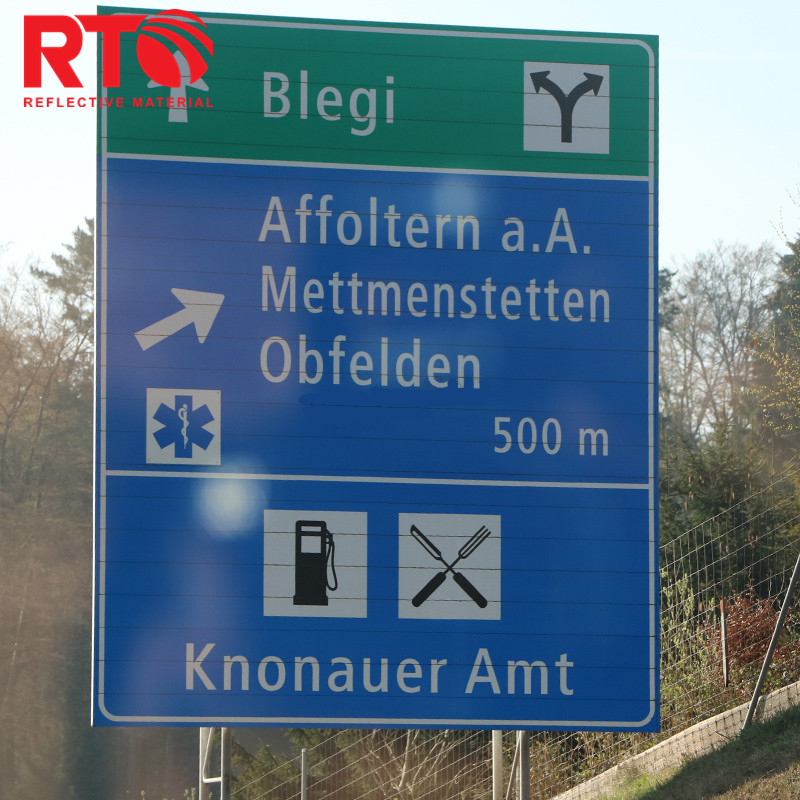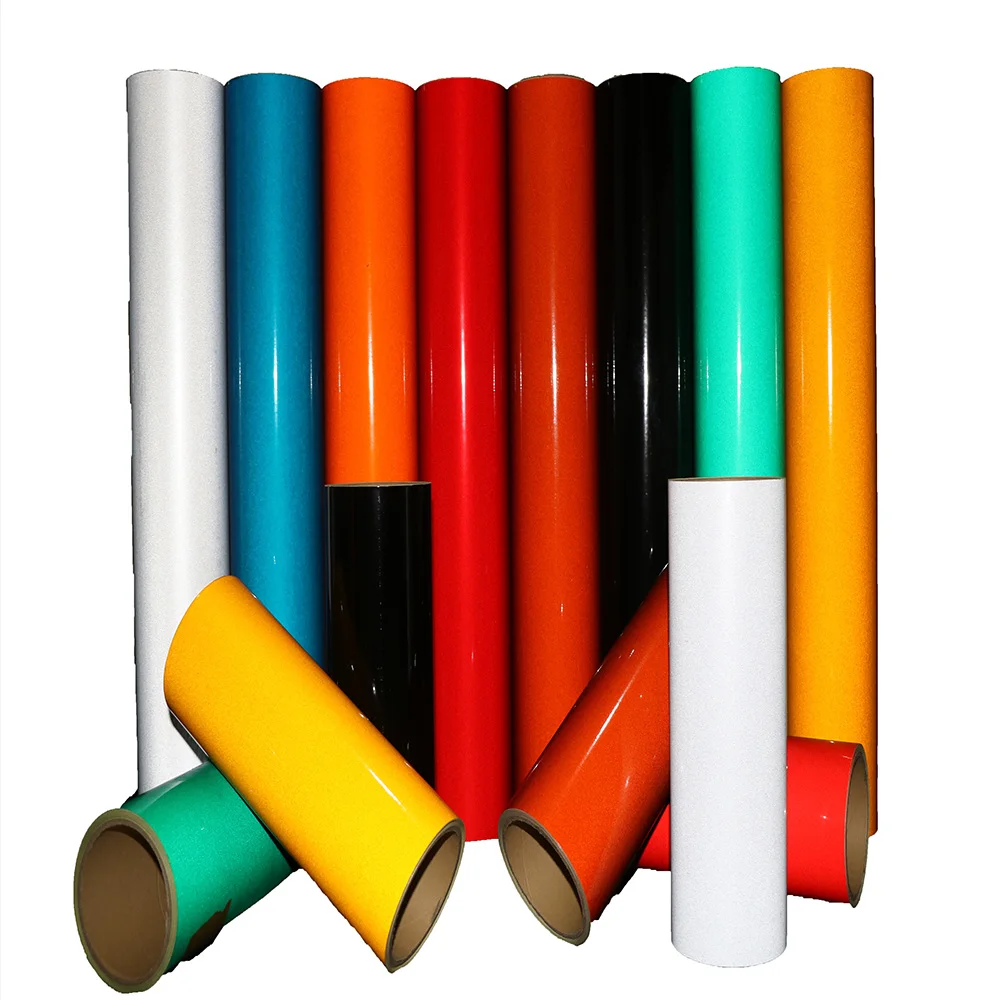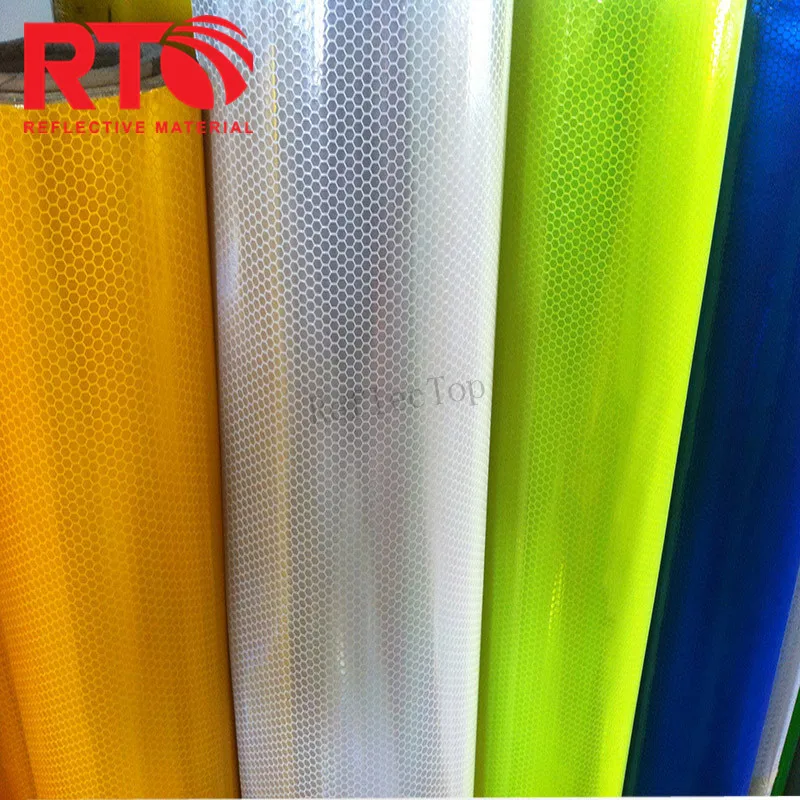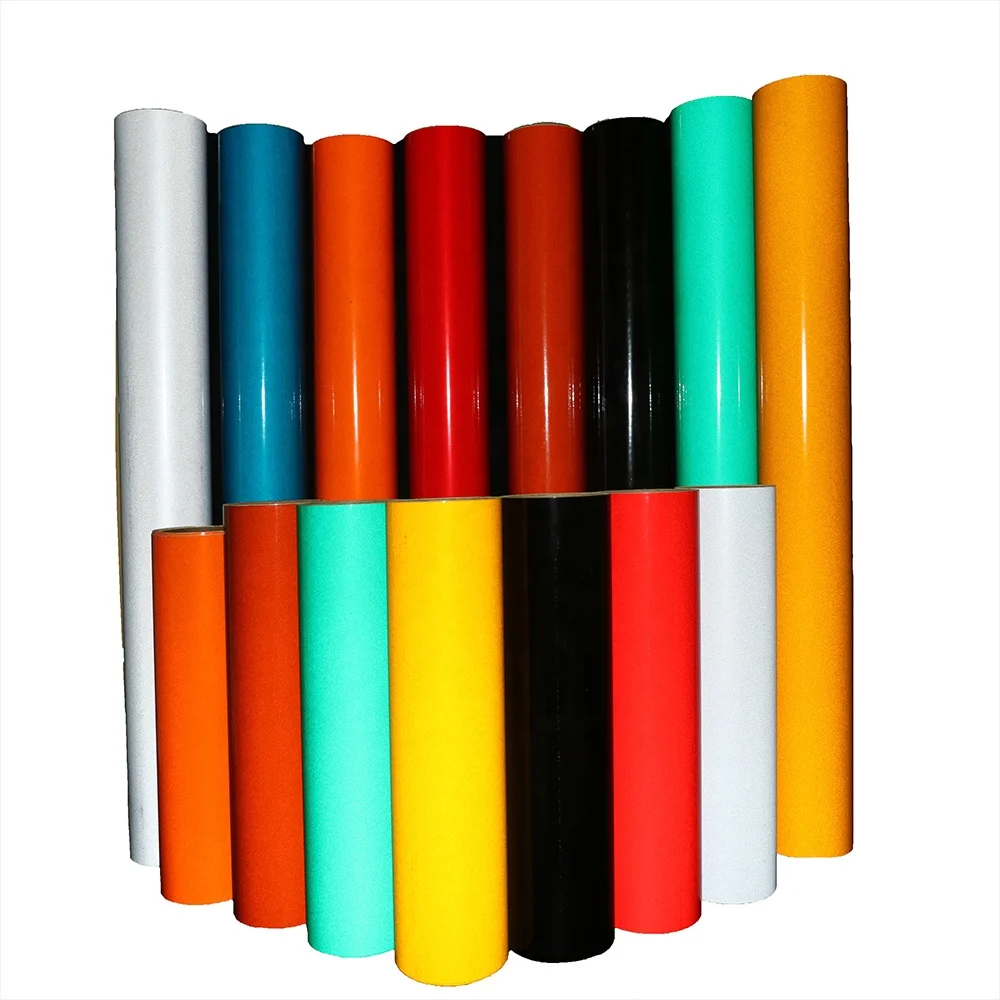Exploring Durable Solutions for Traffic Sign Materials
Key Properties of Durable Materials for Traffic Signs
Impact Resistance and Structural Integrity
Impact resistance is a crucial property for traffic sign materials, as it ensures signs can withstand accidents and vandalism without compromising road safety. Traffic signs are frequently exposed to physical stresses from vehicular accidents and acts of vandalism, which can dent, bend, or even break them. Materials with high impact resistance maintain their structural integrity, allowing these signs to remain functional and readable over time. The ability to preserve their shape and functionality is vital for continuous road safety. For instance, materials like high-grade aluminum and reinforced composites show exceptional impact resistance and can endure significant impacts with minimal damage. Statistics indicate that traffic signs encounter an average of 10,000 impacts annually in urban areas, highlighting the necessity for robust materials that can withstand such common occurrences.
UV Stability for Long-Term Color Retention
UV exposure presents a significant challenge for traffic signs, as prolonged sunlight can cause color fading, reducing visibility and effectiveness. The fading of road signs makes them less legible over time, potentially leading to increased risk for drivers. UV stability in materials is essential to ensure long-term color retention. Testing protocols, such as accelerated weathering tests, mimic years of sun exposure in just a few months to assess a material's resistance to UV radiation. Studies indicate signs made from synthetic polymers, like vinyl and specific coatings, degrade slower under UV exposure than those made with traditional materials. For instance, a study in the "Journal of Applied Polymer Science" showed that vinyl materials have UV degradation rates 30% lower than standard paints, underscoring their longevity and reliability in harsh sunlight.
Corrosion Protection in Harsh Environments
In environments such as coastal regions and industrial areas, corrosion poses a significant risk to the longevity of traffic signs. These locations often feature high salt levels, pollutants, and other corrosive elements that can quickly degrade materials. To combat this, materials with inherent corrosion resistance, such as stainless steel or treated aluminum, are ideal. Additionally, surface treatments like galvanization and anodization provide extra layers of protection, significantly extending the lifespan of the signs. Case studies demonstrate that traffic signs with protective coatings in industrial areas last up to 40% longer than untreated signs. Contrastingly, signs without adequate corrosion protection often face structural failure or require frequent replacements, emphasizing the importance of advanced materials in maintaining long-lasting signage.
Regulatory Standards for Traffic Sign Durability
ASTM D4956 Reflectivity Classifications
ASTM D4956 is a crucial standard that outlines the reflectivity classifications for materials used in traffic signs. These classifications directly impact roadway safety by determining how well a sign is visible under various lighting conditions. Reflectivity classifications range from engineer-grade to diamond-grade, with each level offering varying degrees of brightness and durability. For example, engineer-grade is suitable for less trafficked roads, while diamond-grade is used for high-speed highways where maximum visibility is critical. Materials like reflective tape and reflective vinyl play an important role in meeting these standards, ensuring that signs maintain their visibility during both day and night.
BS EN 12899 Compliance Requirements
BS EN 12899 is the primary European standard ensuring the durability and effectiveness of road signs. Compliance with this standard requires that road signage materials are resilient against environmental factors and that their performance meets strict durability criteria. This regulation impacts public safety significantly by ensuring that signs remain legible and functional over time. Manufacturers must adhere to these guidelines to avoid liabilities and ensure that their products provide the necessary safety features. The implications of non-compliance can include increased accident risks and costly legal repercussions, making adherence to BS EN 12899 crucial for any signage manufacturer.
Warranty Expectations Across Material Grades
Warranty terms linked to traffic sign materials often vary based on the material's grade, reflecting its anticipated performance and durability characteristics. For instance, aluminum signs, known for their longevity and reflective quality, typically come with longer warranty periods, often exceeding ten years. In contrast, plastic-based materials might offer shorter warranties due to less resilience. Understanding these expectations assists municipalities and organizations in making informed purchasing decisions, ensuring the chosen materials provide the best value over their lifespan. Industry benchmarks suggest a minimum warranty period of five years for most durable materials, which helps guide these decisions effectively.
Advanced Reflective Technologies Enhancing Visibility
Micro Prismatic vs Glass Bead Retroreflection
Micro-prismatic and glass bead retroreflective materials are key technologies in enhancing traffic sign visibility. Micro-prismatic retroreflection involves closely packed prisms that reflect light back to its source with minimal scattering, whereas glass bead retroreflection uses microscopic glass beads to achieve a similar effect. In terms of performance, micro-prismatic materials outperform glass beads, with a visibility range increase of up to 30%. This makes them suitable for use in low-light conditions, thereby improving safety. The industry is progressively shifting towards adopting micro-prismatic technology due to its superior reflective properties and efficiency in road safety applications.
High-Intensity Prismatic (HIP) Sheeting Applications
High-Intensity Prismatic (HIP) sheeting is increasingly used in traffic signs due to its enhanced visibility features. HIP sheeting reflects light at a much higher intensity, making signs more noticeable from greater distances. As reported in several case studies, the application of HIP sheeting has resulted in a 50% improvement in visibility, significantly reducing accidents in critical areas such as highways and construction zones. Innovations such as weather-resistant coatings and flexible adhesives further enhance the durability and effectiveness of HIP sheeting, making it a preferred choice for traffic sign manufacturers seeking advanced reflective technologies.
Diamond Grade DG3 Superior Nighttime Performance
Diamond Grade DG3 reflective materials are renowned for their exceptional nighttime visibility. Their advanced design utilizes a multi-layered optical system, which reflects over 60% more light than standard sheeting types, greatly enhancing visibility during dark hours. Statistical data indicates that DG3 sheeting outperforms competing materials, providing clearer recognition of traffic signs from longer distances. Real-world applications in urban environments have demonstrated that DG3 materials not only improve safety but are also highly durable, maintaining their visibility and reflectiveness over extended periods. This makes them ideal for urban planning and road safety improvement projects.
Weather-Resistant Solutions for Extreme Conditions
Waterproof Adhesive Systems
Waterproof adhesive systems play a crucial role in extending the lifespan of traffic signs under various weather conditions. These systems ensure that signs remain affixed even during heavy rainfall or in high-humidity environments, thus protecting the integrity of the sign and ensuring consistent visibility. Materials such as epoxy resins and polyurethane-based adhesives are noted for their superior adhesion and waterproofing capabilities. For example, a case study in a coastal city demonstrated that signs using these adhesives maintained structural integrity three times longer than those with conventional glues.
Thermoplastic vs Pressure-Sensitive Material Options
Understanding the differences between thermoplastic and pressure-sensitive materials is essential when considering the performance and application of traffic signs. Thermoplastic materials are heat-applied, offering a durable solution due to their robust resistance to wear and tear. However, they can be expensive and time-consuming to install. On the other hand, pressure-sensitive materials are easier to apply and cost-effective but may not last as long against extreme weather. Industry trends show a preference for thermoplastic in areas with harsh climates due to its longevity, whereas pressure-sensitive materials are favored in milder environments for quick installations.
Freeze-Thaw Cycle Performance Testing
Freeze-thaw cycle performance testing is significant for evaluating the durability of traffic sign materials, particularly in cold climates. These tests simulate conditions where materials are subjected to freezing and thawing cycles, which can cause structural degradation over time. Standardized methods, such as ASTM D1191, are used to assess the resilience of materials, determining their potential longevity. Statistics show that signs failing these tests are likely to last only half as long as those that pass, highlighting the importance of selecting materials proven to withstand such adverse conditions.
Maintenance Strategies for Longevity
Cleaning Protocols for Reflective Surfaces
Regular cleaning is crucial to maintain the visibility and durability of reflective surfaces, such as traffic signs. The best practices for cleaning these surfaces involve using non-abrasive cleaning agents and soft tools, like microfiber cloths, to avoid scratching. It is essential to choose cleaning products that are compatible with the specific reflective material, such as reflective tape or vinyl, to prevent any deterioration. Studies have shown a direct correlation between cleanliness and the effectiveness of reflective signs, as dirt accumulation can significantly reduce their visibility at night or in adverse weather conditions. Therefore, maintaining a consistent cleaning schedule enhances the performance and lifespan of traffic signs.
Damage Assessment and Replacement Criteria
Assessing damage to traffic signs is critical in ensuring road safety, as damaged signs can lead to miscommunication and confusion. Evaluation should involve checking for signs of wear, such as fading, chipping, or dents that compromise functionality. Criteria for replacement should consider not only the visible damage but also the loss of reflectivity and overall material effectiveness. According to guidelines from safety organizations, signs with reduced visibility or those that no longer meet regulatory standards must be replaced promptly to uphold safety standards on the roads.
Protective Overlay Film Applications
Protective overlay films are a cost-effective strategy to extend the life of traffic signs by shielding them from UV rays and physical damage. These films serve as an additional barrier against elements that cause fading and physical wear over time. Successful applications of these films have been observed across various traffic signage, indicating improved longevity and reduced need for frequent replacements. Economically, investing in overlay films can decrease long-term maintenance costs by preserving the integrity and legibility of the signs, thus ensuring continuous road safety and compliance with expected regulatory standards.
Innovative Reflective Sheeting Products for Durable Traffic Signs
High Intensity Prismatic PET Sheeting (RT-3920)
High Intensity Prismatic PET Sheeting (RT-3920) offers superior durability and visibility, making it ideal for traffic signs. This reflective sheeting combines a robust PET material with high-intensity prismatic technology, ensuring that it withstands harsh weather conditions while maintaining its reflective quality. It is available in various colors such as white, red, yellow, blue, and more, and is equipped with a pressure-sensitive adhesive, making it easy to apply across different environments. Compared to traditional materials, this PET sheeting provides enhanced reflectivity and longevity, ensuring clear sign visibility day and night.

Diamond Grade PMMA Road Sign Material (RT-4950)
Diamond Grade PMMA materials are tailored for heavy-duty traffic signage applications. They provide exceptional reflectivity and surface resilience, crucial for settings with heavy traffic and adverse weather. Compared to other reflective materials, Diamond Grade PMMA offers superior performance longevity and withstands high levels of environmental stress. The RT-4950 sheeting has demonstrated its effectiveness in harsh conditions, such as urban areas with significant vehicular flow, by maintaining visibility and legibility through prolonged exposure to the elements.
Diamond Grade Self Adhesive HIP High Intensity Reflective Sheeting for Road Sign

Acrylic Glass Bead Reflective Film (RT-5200)
The Acrylic Glass Bead Reflective Film, specifically RT-5200, is renowned for its high reflectivity and durable composition. Engineered with glass bead technology, it ensures bright reflectivity for enhanced nighttime visibility. It is ideally used in various traffic applications such as signs and labels that need to remain visible in different lighting conditions. Statistical data highlights that the RT-5200 significantly outperforms conventional materials in reflecting light back to its source, thereby improving safety and readability for drivers.
1.22mx45.7m Self Adhesive Silk screen Printing 3200 Acrylic Glass Beads Reflective Sheeting

Honeycomb PVC Reflective Vinyl for Eco-Printing
The Honeycomb PVC Reflective Vinyl offers a unique combination of durability and eco-friendly properties, making it highly suitable for sustainable printing methods. This material enhances the durability of traffic signs while allowing for eco-solvent printing, which reduces environmental impact. The honeycomb design aids in maximizing visibility focus, crucial for fast-moving traffic areas. By integrating this structure, the product ensures consistent visibility across varying conditions, aligning with global sustainability goals in public signage.

3100 Series Plotter-Cut Reflective Adhesive Vinyl
The 3100 Series Plotter-Cut Reflective Adhesive Vinyl is designed for exceptional customizability and durability across various environments. This product is particularly praised for its resilience in adverse weather conditions, maintaining its adhesive quality and reflective performance. Real-world case studies reveal its widespread adoption in municipal projects where reliability and adaptability are paramount. Its capacity to endure diverse environmental stresses while retaining reflective quality highlights its value in traffic management solutions.
3100 Glass Beads Reflective Vinyl Roll Plotter Cutting Advertisement Reflective Sheeting

Emerging Trends in Traffic Sign Materials
Recycled Plastic Composite Substrates
The use of recycled plastic composite substrates in traffic sign production is gaining traction, offering a sustainable alternative to traditional materials like aluminum. These substrates are made from plastics often found in consumer electronics, making them not only more environmentally friendly but also cost-effective. The advantages include flexibility and durability, with recycled plastic demonstrating performance that matches or even surpasses that of metals in crucial tests. Furthermore, life cycle assessments highlight that these substrates significantly reduce the carbon footprint compared to aluminum, which requires environmentally hazardous processes for preparation. As companies like EcoStrate push these innovations, they promise a transformative impact on the traffic sign industry, both in economic and environmental terms.
Ceramic Bead Enhanced Reflectivity
Ceramic bead technologies are revolutionizing the way traffic signs achieve enhanced reflectivity and performance. These beads, when incorporated into reflective coatings, offer significant improvements in nighttime visibility, making roads much safer. Unlike conventional materials, ceramic bead-enhanced signs have undergone stringent certifications to ensure they meet the highest safety standards, providing reliable performance under all lighting conditions. Comparisons with traditional materials demonstrate that ceramic bead technologies yield higher visibility ratings, a crucial factor in ensuring motorists spot critical information under low-light conditions, mitigating accidents and enhancing road safety.
Smart Materials with Embedded Lighting
Smart materials featuring embedded lighting stand at the forefront of traffic sign innovation, significantly improving nighttime visibility. These materials incorporate advanced technologies such as LED systems that activate automatically, ensuring critical sign information remains visible even in the darkest conditions. These developments have been driven by recent technological advances, offering an energy-efficient solution with potential for widespread application in urban settings. Several pilot programs have successfully implemented these smart signs, showcasing their efficacy in real-world traffic scenarios. Such innovations present an exciting future where traffic safety can be enhanced with intelligent, responsive materials.

 EN
EN






































 ONLINE
ONLINE